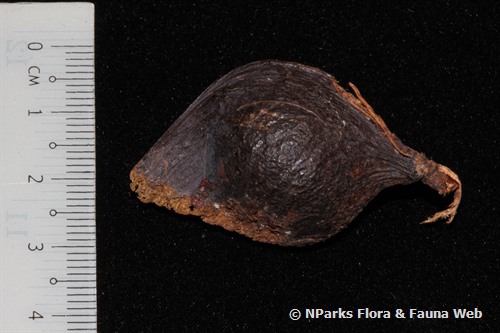
Name
Classifications and Characteristics
| Plant Division | Angiosperms (Flowering Seed Plants) (Dicotyledon) |
|---|---|
| Plant Growth Form | Tree (Big (>30m)) |
| Lifespan (in Singapore) | Perennial |
| Mode of Nutrition | Autotrophic |
| Plant Shape | Irregular |
| Maximum Height | 33 m |
Biogeography
| Native Distribution | Peninsular Malaysia, Singapore, and Borneo |
|---|---|
| Native Habitat | Terrestrial (Primary Rainforest) |
| Preferred Climate Zone | Tropical |
| Local Conservation Status | Native to Singapore (Critically Endangered (CR)) |
Description and Ethnobotany
| Growth Form | It is a tree, up to 33 m tall. |
|---|---|
| Foliage | Its alternate, stalked leaves have leathery leaf blades that are oval to drop-shaped-oval, 5.5-13 by 3-7.5 cm, and densely covered with coppery or grey scales below. Its midrib is raised on both surfaces of the leaf blade. |
| Flowers | Its pink flowers are about 3 mm wide, and grow in a flowering shoot in the axils of fallen leaves. |
| Fruit | Its brown fruits are drop-shaped, 3-5 cm long, and have a 3.8 cm-long wing. |
| Habitat | It grows in lowland forests up to 1,000 m altitude. It occurs locally along Chestnut Avenue. |
| Associated Fauna | Its flowers are insect-pollinated. |
| Cultivation | It can be propagated by seed. |
| Etymology | Latin Heritiera, commemorating Charles Louis L’Heritier de Bautelle (1746-1800), a French botanist and author; Latin elata, tall, referring to usual tall stature of the tree. |
| Ethnobotanical Uses | Cultural / Religious: Heritage Tree : There is currently one individual of Heritiera elata listed as a Heritage Tree in Singapore. It can be found in Singapore Botanic Gardens. To find out more about this tree, please visit the Heritage Tree Register. |
Landscaping Features
| Landscaping | It is suitable for planting in parks for its attractive leaves that are bronze-coloured on the underside. |
|---|---|
| Desirable Plant Features | Ornamental Foliage |
| Landscape Uses | General, Parks & Gardens |
Fauna, Pollination and Dispersal
| Pollination Method(s) | Biotic (Fauna) |
|---|---|
| Seed or Spore Dispersal | Abiotic |
Plant Care and Propagation
| Light Preference | Full Sun |
|---|---|
| Water Preference | Moderate Water |
| Plant Growth Rate | Moderate |
| Rootzone Tolerance | Moist Soils, Well-Drained Soils, Fertile Loamy Soils |
| Propagation Method | Seed |
Foliar
| Foliage Retention | Evergreen |
|---|---|
| Mature Foliage Colour(s) | Green, Brown |
| Mature Foliage Texture(s) | Leathery |
| Foliar Type | Simple / Unifoliate |
| Foliar Arrangement Along Stem | Alternate |
| Foliar Attachment to Stem | Petiolate |
| Foliar Shape(s) | Non-Palm Foliage (Obovate, Oval) |
| Foliar Venation | Pinnate / Net |
| Foliar Margin | Entire |
| Leaf Area Index (LAI) for Green Plot Ratio | 3.0 (Tree - Intermediate Canopy) |
| Mature Foliage Colour(s) Remarks | Bronze or silvery on the underside of the leaves. |
Floral (Angiosperm)
| Flower & Plant Sexuality | Bisexual Flowers |
| Flower Colour(s) | Pink |
|---|---|
| Flower Grouping | Cluster / Inflorescence |
| Flower Location | Axillary |
| Flower Symmetry | Radial |
Fruit, Seed and Spore
| Mature Fruit Colour(s) | Brown |
|---|---|
| Fruit Classification | Simple Fruit |
| Fruit Type | Indehiscent Dry Fruit |
Image Repository
Others
| Master ID | 1658 |
|---|---|
| Species ID | 2951 |
| Flora Disclaimer | The information in this website has been compiled from reliable sources, such as reference works on medicinal plants. It is not a substitute for medical advice or treatment and NParks does not purport to provide any medical advice. Readers should always consult his/her physician before using or consuming a plant for medicinal purposes. |

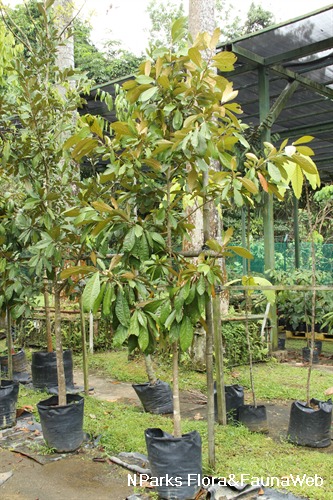
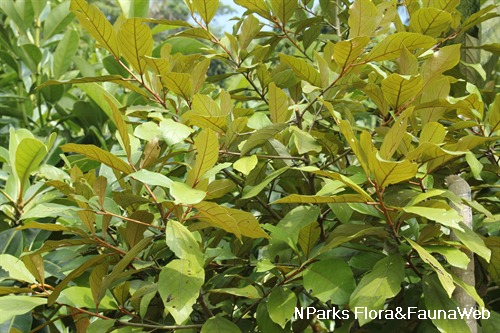
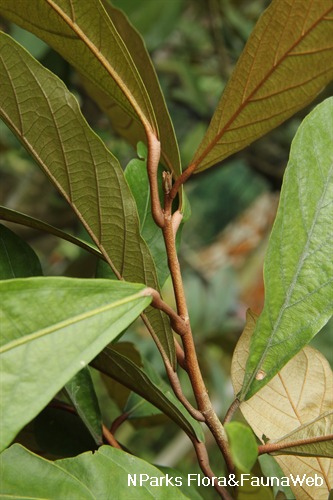
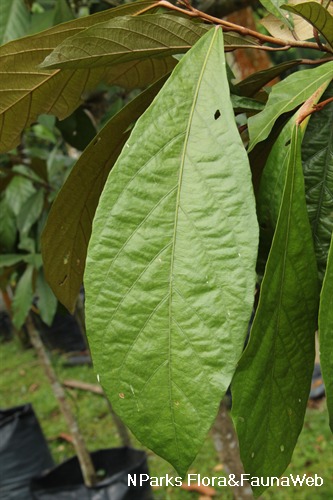
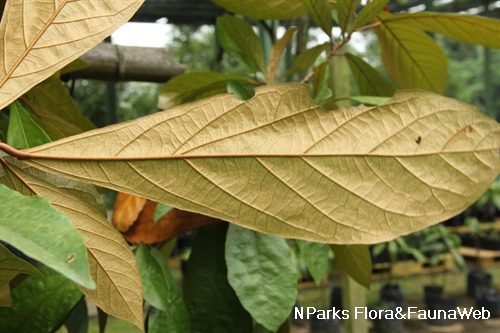
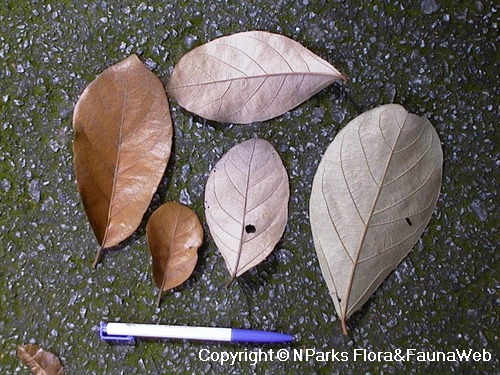
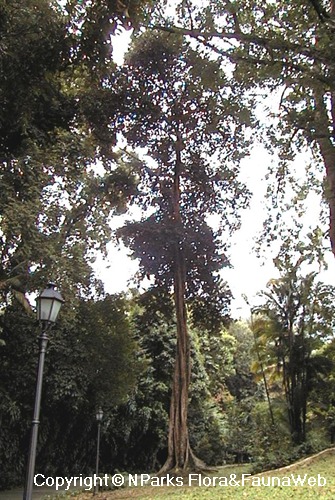
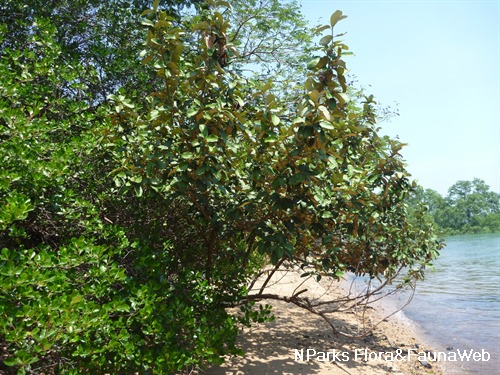
.jpg)